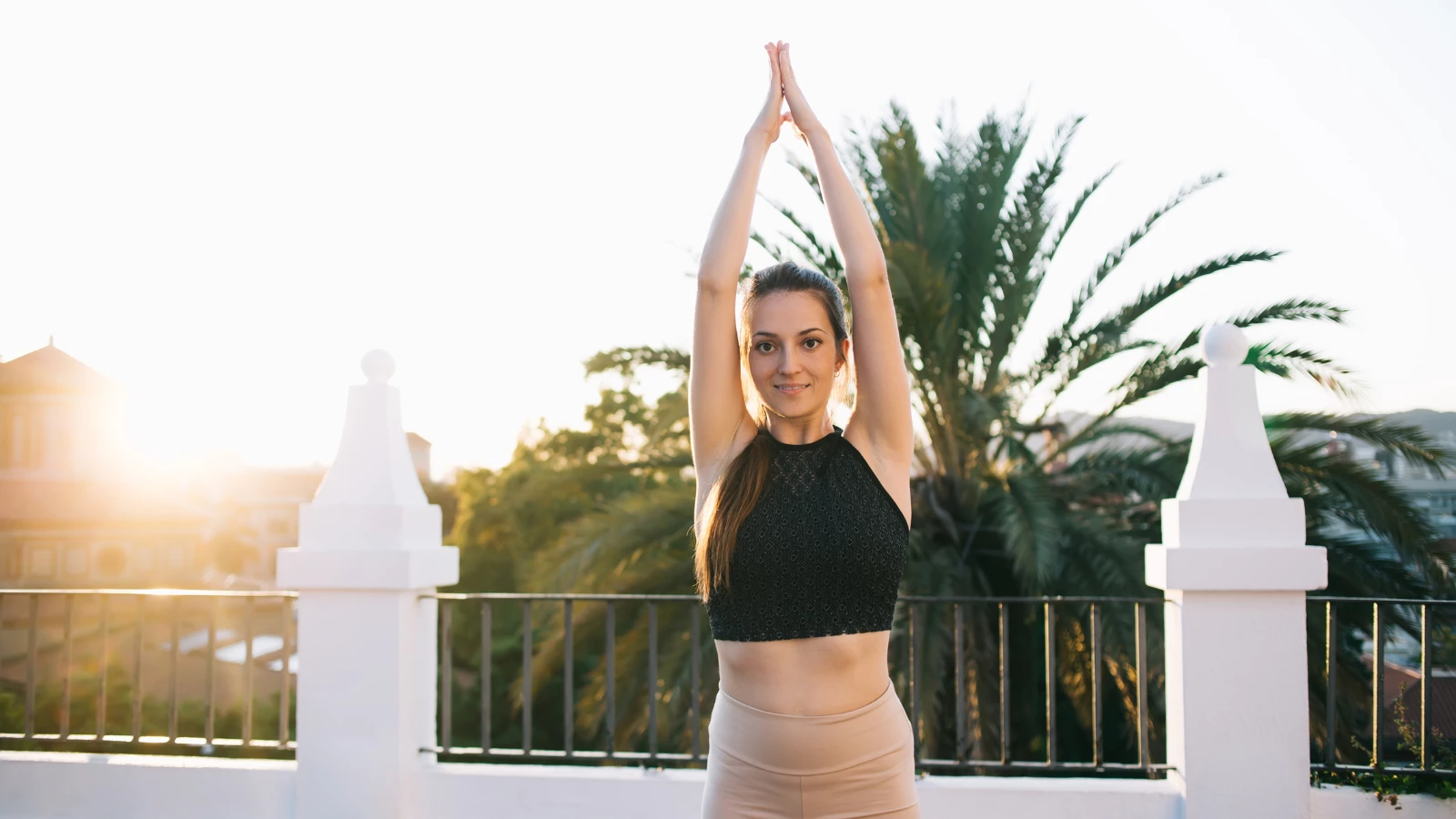Yoga Pose Primer: Upward Hands Pose (Urdvha Hastasana)

When you first leave the comfort of your bed each morning, what’s the first thing you want to do? Like other animals—think about your cat or dog—our instinct is to stretch out. While we sleep, our bodies immobile, the fascia that surrounds our muscles tightens. In order to wake up our muscles, we need to loosen this outer sheath. So we stretch.
So our first actual asana of the day might be a simple standing stretch. In asana practice, this stretch is called Upward Hands Pose or Upward Salute Pose (Urdhva Hastasana). In the context of a vinyasa class, it’s often the pose that initiates the whole sequence. From Urdhva Hastasana, everything else follows. Here are some tips on Upward Hands Pose.
Upward Hands Pose is not just a pose to pass over quickly in order to get to the asanas that follow. It’s an asana in its own right. Often, in pursuit of “fancier” poses, we overlook the power of those that seem simpler. The pursuit of extreme sensation actually leads away from yoga’s greatest gift—the quiet mind. Urdhva Hastasana can teach us to look more deeply and to appreciate subtlety.
Urdhva Hastasana invigorates the body and mind. It’s a great pose for shaking off the midday doldrums. Try practicing it every 20 to 30 minutes to break up your desk-sitting time. It promotes balancing skills and helps you stretch the oft-neglected side body. When practiced with attention to continuity, it can help to realign your posture.
How To Practice Urdvha Hastasana – Tips on upward hands pose

- Stand on a yoga mat with your feet together. (Placing your feet hips-width apart is also okay and may help you feel more grounded.)
- Press the soles of the feet down into the floor.
- Place your hands in Anjali Mudra (Prayer Position).
- Keeping your palms together, raise your arms up toward the sky until your arms are straight.
- Alternatively, you can stretch your arms upward, keeping them parallel with your palms facing each other. Or if you like, you can clasp your fingers and turn your palms upward.
- With the arms raised upward, continue to root your feet into the floor. Feed your pelvis down into your legs and feet, and grow your waist up out of your pelvis.
- Keep your head in a neutral position, looking straight ahead. Or, you can draw your throat back toward your cervical spine and tilt your head slightly back, lengthening your neck as you go. Do not overextend the neck by letting your head simply hang backward.
- Check for continuity. The next three points, 9, 10, and 11, will help you refine your asana.
- Are your front ribs poking forward so that your back ribs are collapsing toward your pelvis? If so, lift your back ribs and draw your front ribs back.
- Is your tailbone tucking? Instead, draw the tops of your thighs back so that you maintain your spinal curves. But take care not to poke your bottom ribs forward as you draw your thighs back.
- Are you struggling to keep your shoulder blades down (as in Anusara’s “shoulder loop”)? Our shoulder joints are designed so that when we raise our arms, our shoulder blades should wing out to the sides to give us more reach. Trying to slide the shoulder blades down while raising our arms impedes our ability to stretch. So allow the shoulder blades to wing out to the sides.
- Take 5 to 10 deep breaths.
- With your palms together, lower your hands toward your chest, returning to Anjali Mudra. Pause here for a breath or two before allowing your arms to dangle at your sides.
Urdhva Hastasana is not just a throwaway pose, one that leads to more important ones. It can invigorate your entire body, teach you about creating continuity through your joints and give you access to a peaceful mind. Practice these tips on Upward Hands Pose with awareness and ease.
Also, read...
Online Yoga Tutorial: Power Up Your Warrior II – Virabhadrasana II
Which Is the Best Way to Come Into Triangle Pose?
Cat-Cow Pose (Marjaryasana-Bitilasana)
Related courses

Charlotte Bell began practicing yoga in 1982 and began teaching in 1986. She was certified by B.K.S. Iyengar in 1989 following a trip to Pune. In 1986, she began practicing Insight Meditation with her mentors Pujari and Abhilasha Keays. Her asana classes blend mindfulness with physical movement. Charlotte writes a column for Catalyst Magazine and serves as editor for Yoga U Online. She is the author of two books: Mindful Yoga, Mindful Life, and Yoga for Meditators, both published by Rodmell Press. She also edits Hugger Mugger Yoga Products’ blog and is a founding board member for GreenTREE Yoga, a non-profit that brings yoga to underserved populations. A lifelong musician, she plays oboe and English horn in the Salt Lake Symphony and the folk sextet Red Rock Rondo whose 2010 PBS music special won two Emmys.



